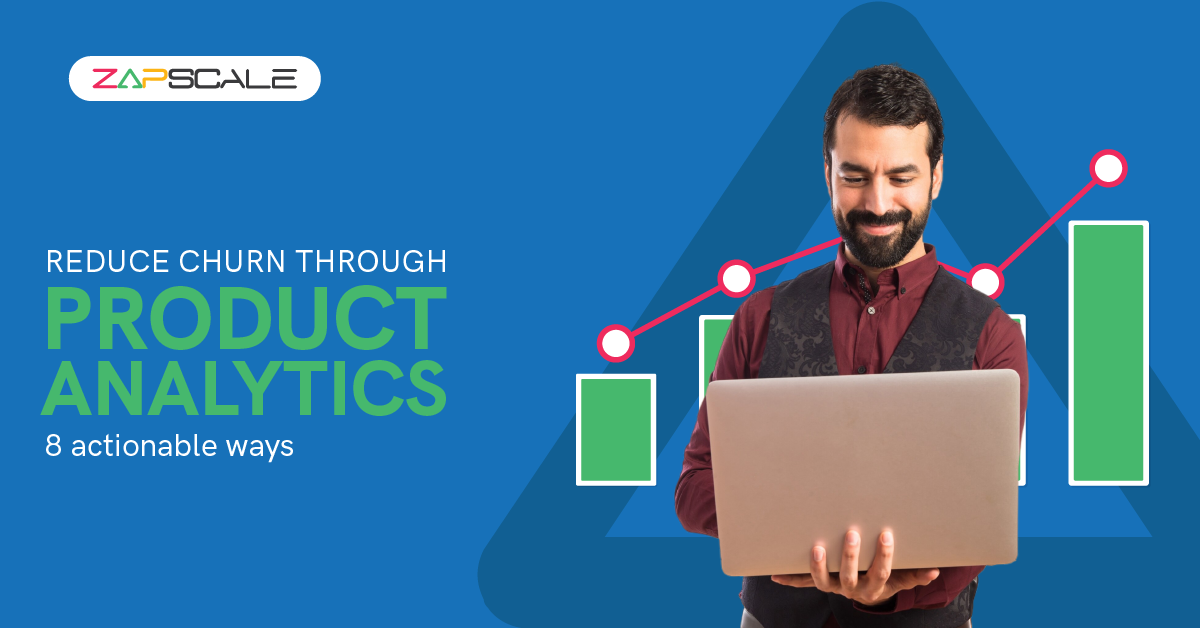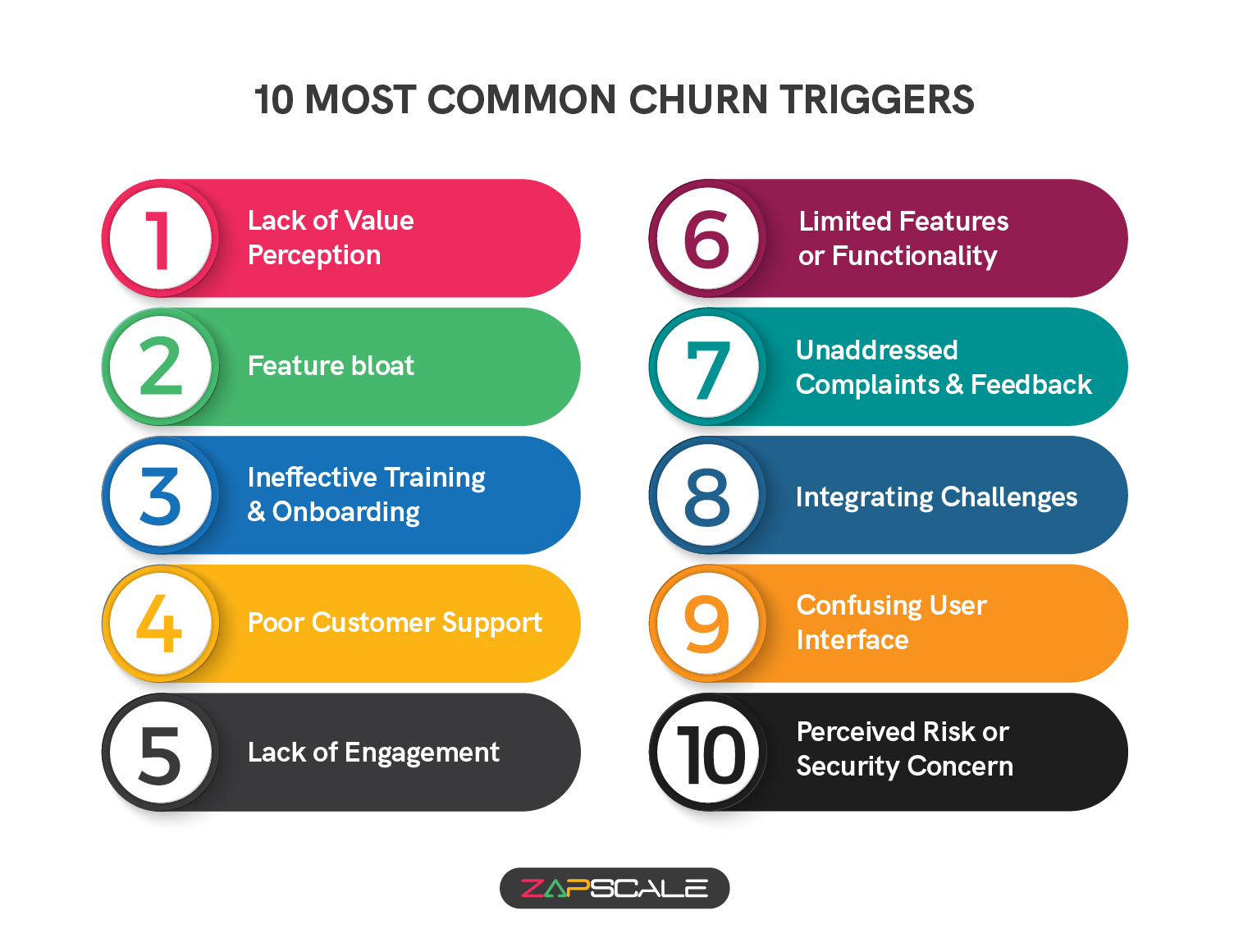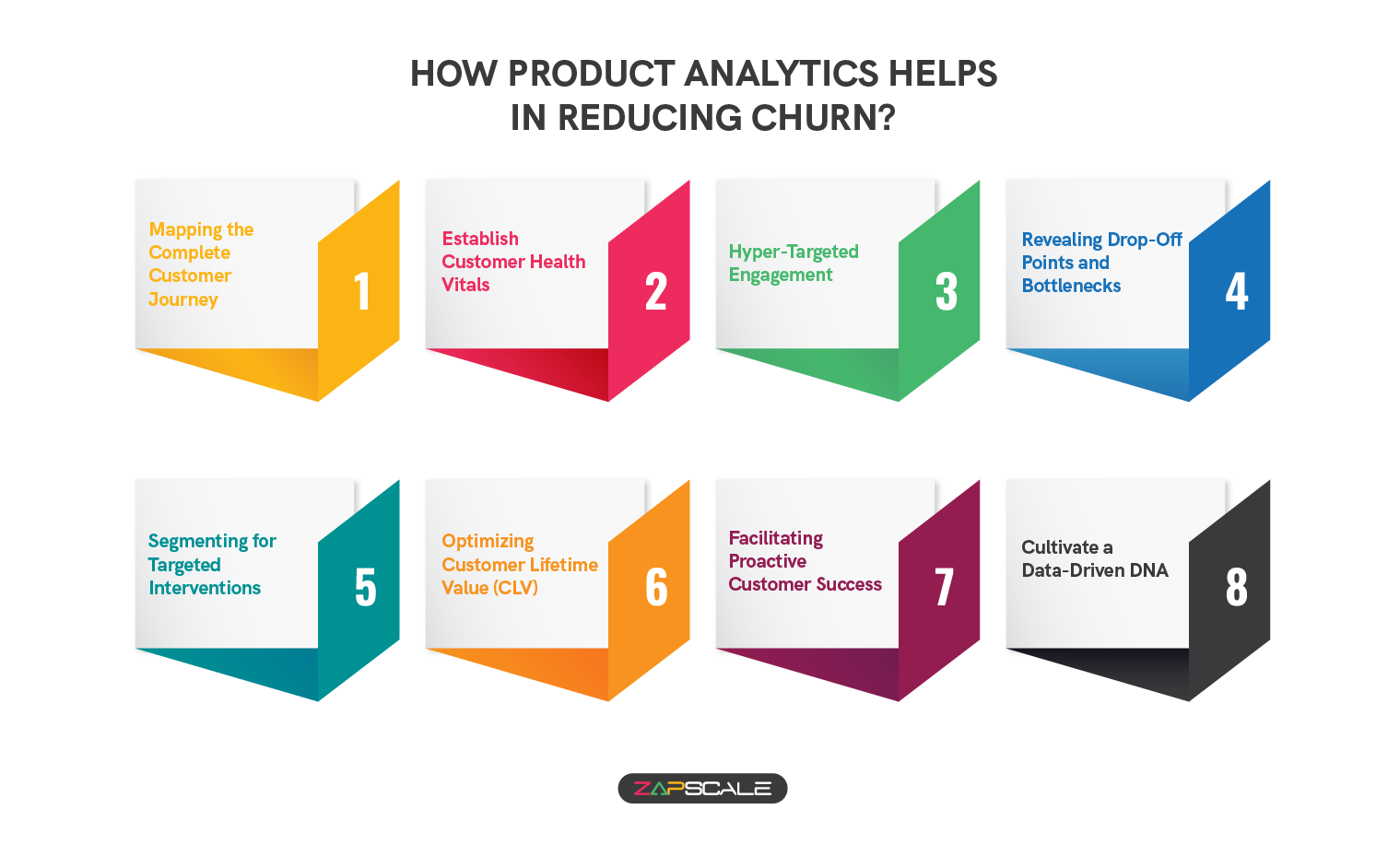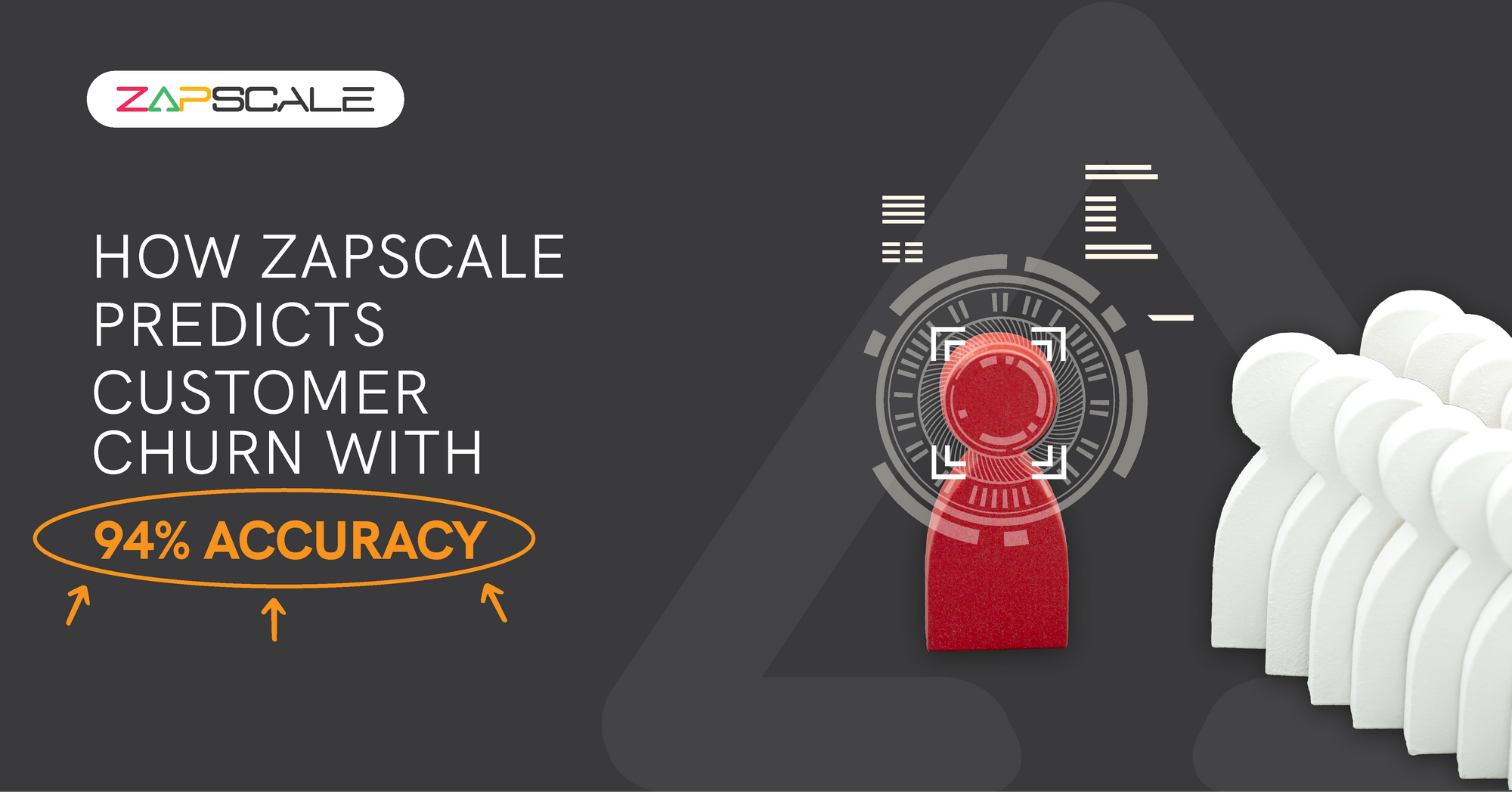CATEGORY > Customer Churn
How Product Analytics Predicts (and Prevents) Churn

Are you seeing usage metrics decline or getting an influx of cancellation requests? Or perhaps churn has been steadily increasing, and you can't quite figure out why. Regardless of the situation, high customer churn rates put a serious dent in your growth plans and bottom line.
What if you had a cheat code of customer retention with 'precognition'? Delving deeper, uncovering hidden behavior patterns that predict when a seemingly happy subscriber might become a churn statistic. Product analytics empowers you to do just that!
Product analytics empowers you with the precognition to intervene proactively with holistic customer visibility, targeted support, personalized nudges, or even feature adjustments that keep customers feeling valued and engaged.
Let's discover how product analytics can be your ultimate churn-slashing weapon!
Understanding the Depths of Product Analytics
Product Analytics is the compass that navigates your product team through the seas of user data. At its core, it's understanding how your customers interact, engage, and proceed with your product through different stages in the customer journey.
From clicks and swipes to page views, and everything in between, giving you an invaluable heap of data to analyze.
Product analytics facilitates comprehensive analysis, including conversion, churn, attribution, retention, segmentation, and funnel analysis. This then, empowers businesses to optimize their products, enhance customer success, and drive sustainable growth through data-driven insights and strategies.
This data isn't just numbers on a screen.
You can see:
- What features are loved (and which flop)
- If users get stuck anywhere (and fix it!)
- How many visitors turn into paying customers
- What friction points and roadblocks hinder user adoption
- Which user flows and funnels need optimization to reduce dropoff
Product analytics is all about helping you build a product people (actually) love.
The Intricacies of Churn Prediction
In the B2B SaaS industry, churn can be a silent threat, gradually eroding your revenue streams and undermining your growth efforts.
That's why predicting customer churn risks accurately is one of the top priorities for product teams.
However, churn prediction is no easy feat. It's a complex, multi-layered challenge that demands a deep understanding of user behavior, product engagement patterns, and the myriad of factors that can influence a customer's decision to stay or go.
While historical data plays a crucial role in identifying churn patterns, accuracy is not guaranteed.
Here's why:
- User behavior is dynamic, and relying solely on past patterns can often lead to inaccurate or incomplete predictions.
- This data can't always tell you why customers are departing, leaving you blind to critical issues like bugs or usability problems.
- This model may lack the necessary granularity and specificity to forecast churn events and opportunities to proactively engage with at-risk customers.
This is where the product analytics comes into play. By grasping granular data on user interactions, feature adoption, and engagement levels, product analytics empowers you to identify the subtle signals and leading indicators that can foreshadow potential churn risks.

How Product Analytics Help in Reducing Customer Churn?
Losing users doesn't just mean a direct hit to your recurring revenue. It also represents a notable investment in acquisition and onboarding efforts going down the drain. That's why accurately predicting and slashing churn risks is a top priority for product teams.
Here's how product analytics acts as the game-changer your business needs to minimize churn and drive growth.

1. Mapping the Complete Customer Journey
Product analytics pictures every twist and turn of the user experience, allowing you to pinpoint potential sources of friction, confusion, or dissatisfaction before they drive customers away.
2. Establish Customer Health Vitals
You can define and monitor essential KPIs like engagement rates, feature adoption, and customer satisfaction scores, enabling you to identify negative trends and intervene quickly.

3. Hyper-Targeted Engagement
Product analytics help you identify the features and functionalities users find most valuable. This empowers you to prioritize improvements that keep them engaged and coming back for more.
You can personalize the user experience by highlighting these high-value features or offering in-app tutorials precisely at the moment a user needs them.
4. Revealing Drop-Off Points and Bottlenecks
By analyzing user flows and funnels, you can uncover the precise moments when users are getting disengaged or dropping off, allowing you to address these pain points directly.
Perhaps a specific onboarding step is confusing, or a cool feature is buried too deep within the interface. Identifying these friction points can help you streamline the user journey and make your product more intuitive.
5. Segmenting for Targeted Interventions
Not all churn risks are created equal. Product analytics lets you segment your user base based on a wide range of factors, enabling targeted interventions and personalized outreach to at-risk users.
By tracking key metrics like customer health scores, sentiment analysis from in-app surveys, and engagement rates, product analytics identifies users at risk of churning before they disappear completely.
6. Optimizing Customer Lifetime Value (CLV)
Identify your highest-value users and understand their unique journeys, helping you to cater to their needs and foster long-term loyalty. After all, your highest-value users are the backbone of your business, representing a significant portion of your revenue and growth potential.
7. Facilitating Proactive Customer Success
Product analytics empowers your customer success teams to deliver timely, personalized support and interventions by providing real-time visibility into user engagement and health scores.
8. Cultivate a Data-Driven DNA
Ingrain product analytics into your organizational culture to foster a data-driven mindset that inspires customer-centric decision-making across teams and functions.
For your product team, this means continually iterating and enhancing your offering based on hard data about user behavior, pain points, and feature adoption.

For your marketing squad, it translates into more targeted, resonant messaging and campaigns that speak directly to your customers' needs and aspirations.
Even your sales team can leverage product analytics to craft more compelling narratives, demo experiences, and value propositions that resonate with prospective buyers based on the successes and journeys of your existing user base.
By proactively addressing customer needs and pain points identified through your analytics, you can turn churn into a distant memory and build a loyal user base that fuels your business growth.
Conclusion
Churn happens! But accepting it as an inevitable fate? Not on your watch. To prevail, secure the growth horizons, and scale profitability, you need an all-seeing tool that reveals every touchpoint in the customer journey.
This is the unparalleled value of product analytics, your strategic high ground in churn reduction.
As you undertake your product analytics journey, keep these key takeaways in mind:
- Prioritize retention as a strategic benefit.
- Establish and track customer health metrics that align with your unique business goals and priorities.
- Go beyond vanity metrics. Identify specific user behavior patterns and translate them into actionable strategies.
- Align your product roadmap with the needs and aspirations of your highest-value users.
- Provide customer-facing teams with a unified source of truth.
- Experiment continuously, testing different churn reduction strategies and iterating based on real-world data.
And here's a bonus tip:
Start small, but start now. Implement product analytics tracking and begin capturing user data from day one. Involve stakeholders across your organization and foster an environment where teams share learnings and work in lockstep. So, go forth and explore the brilliance of product analytics!
ABOUT THE AUTHOR
Popular from Customer Churn
Quality Content,
Straight To Your Inbox!
Subscribe for the latest blogs, podcasts, webinars, and events!

Write a Blog
If you have experience in CS and
a flair for writing, we’d love to
feature you.
Write to us on
hello@zapscale.com






